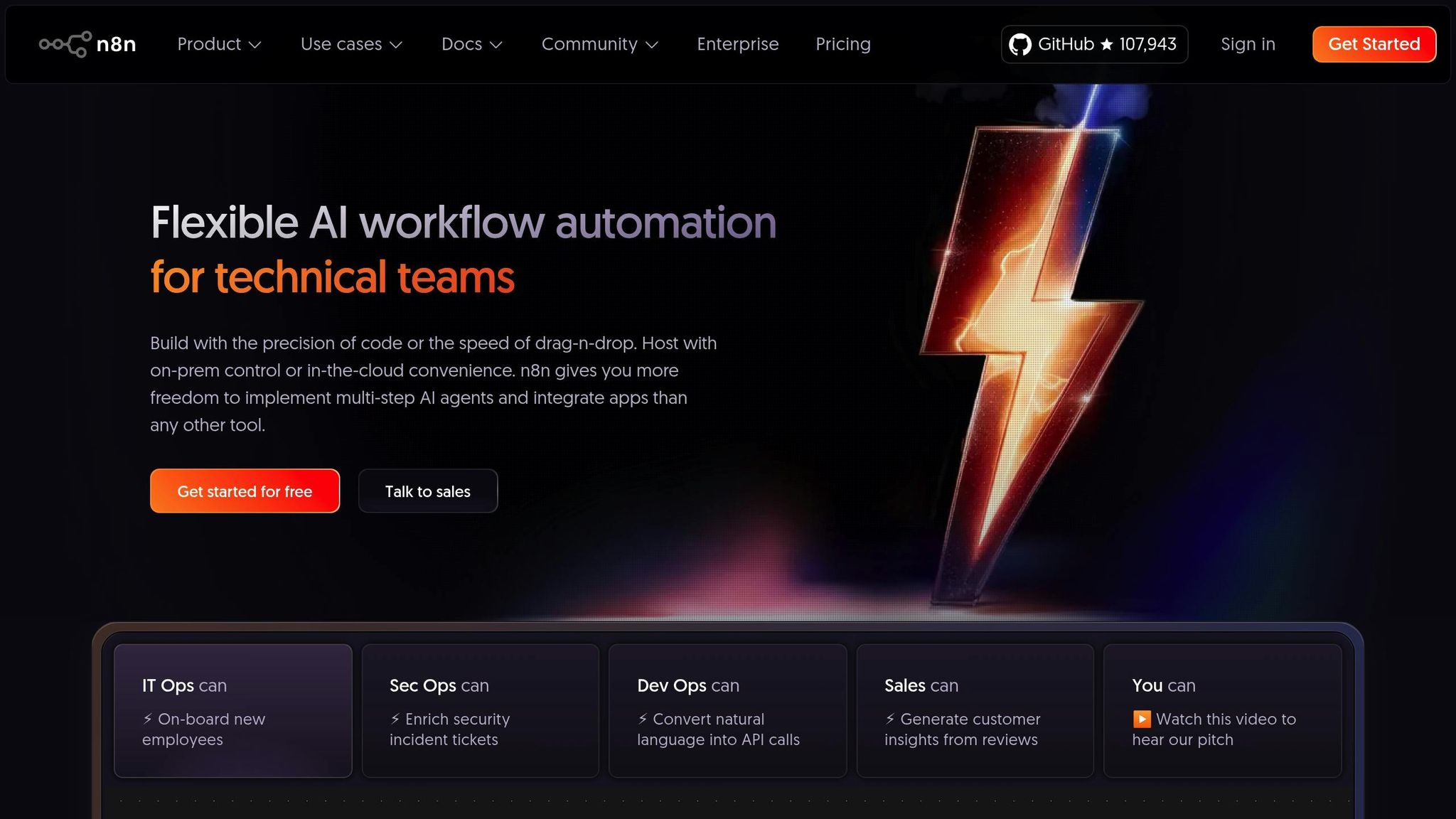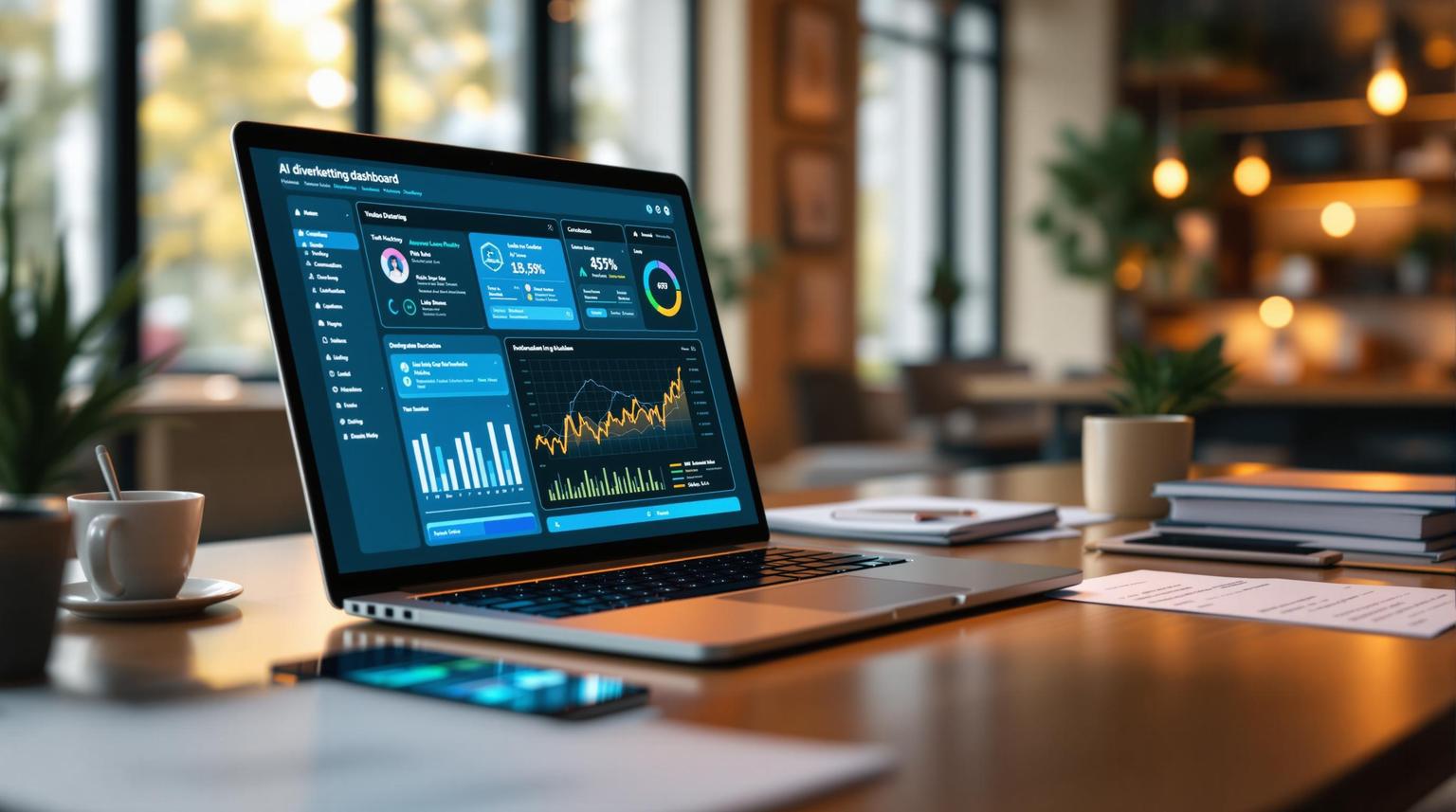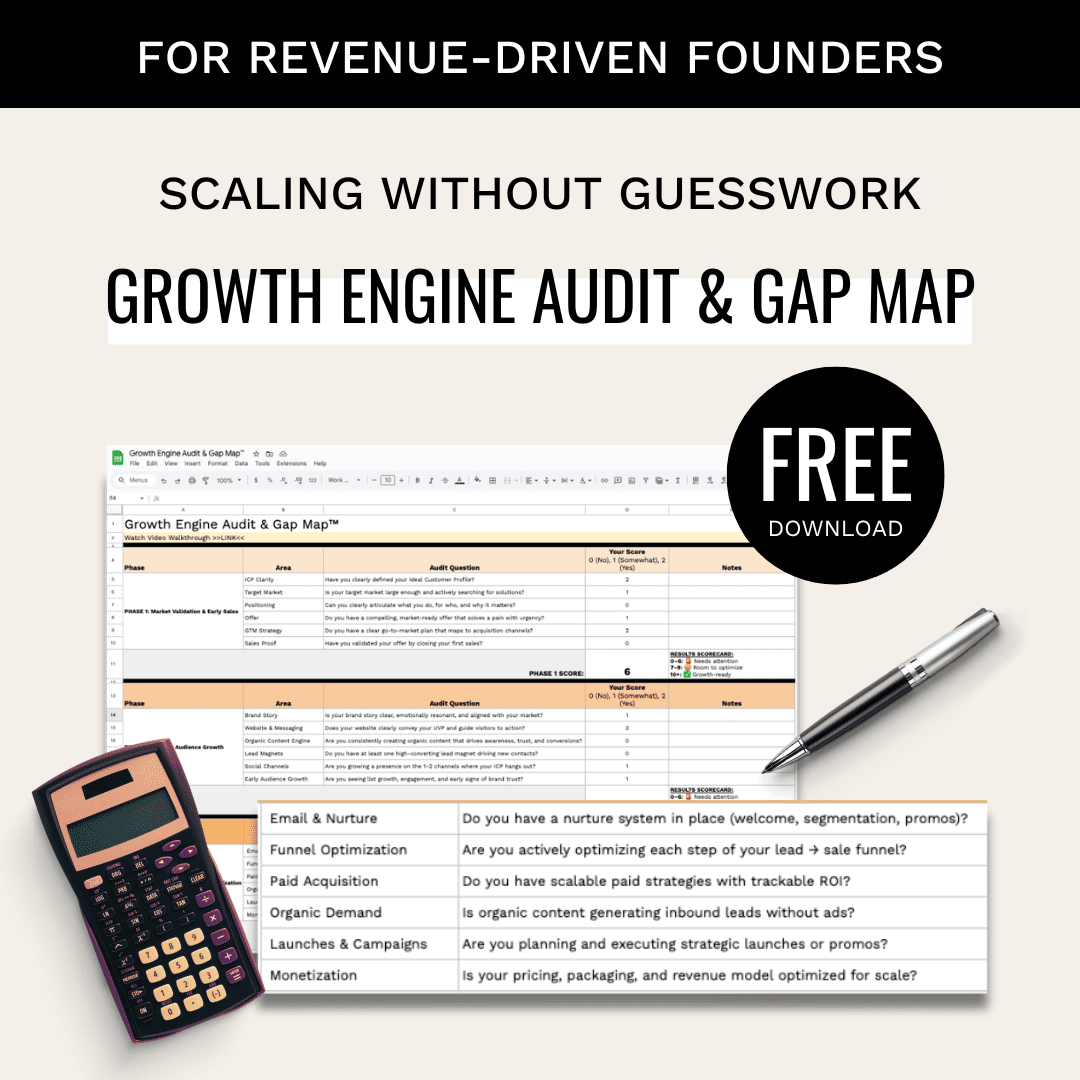AI marketing automation is transforming how businesses connect with customers. It replaces guesswork with data-driven precision, enabling real-time personalization and smarter decision-making. Here’s why it matters and how you can stay ahead:
- Massive Adoption: 87% of marketers have used AI tools, and 68% use them daily.
- Proven Results: Companies report up to a 30% boost in engagement and a 25% rise in conversions.
- Future Growth: AI marketing spending is expected to reach $107 billion by 2028.
Key Takeaways:
- Use AI to automate repetitive tasks like lead qualification, email personalization, and content distribution.
- Focus on Vibe Coding: a strategy combining automation with human insight to keep marketing authentic and effective.
- Avoid over-automation and disconnected systems; always balance AI with a human touch.
AI marketing automation isn’t just about tools – it’s about creating systems that scale while maintaining genuine customer connections. Start small, optimize continuously, and integrate AI thoughtfully to stay competitive.
How B2B Marketing Teams Use AI Automation in 2024
How AI Marketing Automation Works
AI marketing automation is more than just sending automated emails – it’s a fundamental rethinking of how marketing systems operate. By blending machine learning with real-time decision-making, these systems continuously learn and adapt based on user behavior. This shift is at the core of the Vibe Coding approach, which combines smart automation with creative strategy.
Traditional automation relied on rigid, rule-based workflows (e.g., downloading a whitepaper triggers Email A; no response leads to Email B). AI marketing automation takes this to the next level. Instead of following fixed paths, it uses machine learning models and behavioral data to make context-driven decisions on the fly.
"AI for marketing automation doesn’t just help you ‘set and forget’ a campaign. It predicts behavior, adapts in real time, and makes intelligent decisions that drive conversions, retention, and customer lifetime value." – Agnishwar Banerjee, Leads content and digital marketing
The impact is clear: companies using AI in marketing have seen up to a 30% increase in ROI, according to McKinsey. By 2024, 94% of organizations will rely on AI for planning or executing marketing activities, and 69% of marketers will have already integrated AI into their operations.
From Individual Tactics to Unified Systems
One of the biggest transformations in marketing is the shift from standalone tactics to fully interconnected systems. Instead of running separate campaigns for email, social media, and ads, forward-thinking marketers are integrating these elements into cohesive systems that work together seamlessly.
Take Lenskart, for example. By implementing AI-driven marketing automation with CleverTap, they unified data from multiple sources and used automated segmentation based on RFM (recency, frequency, monetary) analysis. This enabled them to create campaigns tailored to real-time user behavior. The results? A 68% boost in engagement with personalized push notifications, 75% more efficient campaigns, and unified customer profiles.
In the past, marketing often involved launching a campaign, waiting for results, and then adjusting – a process that could take weeks. AI-powered systems have completely changed this dynamic. These systems continuously optimize through real-time adjustments, scale automatically, and learn as they go. This approach reflects the principles of Vibe Coding, where marketers design adaptive workflows rather than micromanaging individual campaigns.
How Generative AI Powers Personalization
Building on these unified systems, generative AI is taking personalization to unprecedented levels. It’s no longer an optional feature – it’s essential for staying competitive. Generative AI doesn’t just segment audiences; it creates unique, tailored experiences for individuals at scale.
AI makes critical decisions in real-time micro-moments. For example, it analyzes the best times for each user to engage, adjusts send times to maximize clicks, and uses clustering algorithms to build dynamic segments based on recency-frequency-value metrics, product preferences, and engagement patterns.
The results speak for themselves. Upday, a news app, used Braze Predictive Insights to send personalized push messages to users who hadn’t opened the app in 30 days, successfully reactivating 528,000 users. Similarly, BlaBlaCar saw a 30% increase in bookings and a 48% rise in click rates by using automated cross-channel journeys.
Personalization extends beyond timing and messaging. AI now generates content tailored to individual preferences. As Raffaella Accogli, Global CRM Manager at The Fork, explains:
"I felt like I always used the same words, the same expressions, the same concept. With the Braze AI Copywriting Assistant, I can find a way to talk about the same concept using different words. And, it provides inspiration to develop new approaches."
This level of personalization delivers measurable results. Companies that adopt these strategies report a 10–15% increase in revenue and greater efficiency in customer acquisition. Additionally, 45% of online shoppers are more likely to purchase from sites offering personalized recommendations. Looking ahead, AI chatbots are expected to manage 85% of customer service interactions by 2024, and AI-optimized digital ad spending is projected to hit $120 billion globally by the same year.
What You Can Automate Right Now
AI automation takes care of repetitive tasks while still leaving room for that all-important human touch. In fact, 74% of marketers report that AI-driven insights help them design campaigns that are more relevant and effective. The trick is figuring out which tasks are ripe for automation and which ones need a personal approach.
Here’s a closer look at what you can automate today.
Lead Capture and Qualification
AI tools can handle the heavy lifting when it comes to gathering and analyzing leads. By using chatbots to capture visitor data, enriching CRM records, and sending alerts to sales teams, these tools streamline the process. For example, BMW uses IBM Watson chat assistants to manage tasks like booking test drives and scheduling services. When queries get more complex, they’re passed along to human agents for a personalized response.
You can take this further by integrating tools like n8n. Imagine setting up workflows where new leads automatically trigger data enrichment from their LinkedIn profiles, followed by tailored email sequences based on their job role and company details. It’s automation working hand-in-hand with human expertise.
Personalized Email Campaigns
AI doesn’t just help you find leads – it makes communication smarter, too.
With GPT-powered tools, you can analyze past interactions, website activity, and purchase history to create highly targeted emails. For instance, ThinkFuel automated audience segmentation to send personalized emails at different stages of the customer journey, while also flagging key moments for human intervention.
Content Distribution Across Channels
Why reinvent the wheel for every platform? Write one great piece of content and let automation handle the rest. By pairing a headless CMS with automation tools like n8n, you can create platform-specific captions, schedule posts, and even generate visuals based on engagement data.
A great example: Taxfix cut down their content update process from weeks to just minutes. Similarly, brands like Sephora use automated workflows to sync blog posts, social media updates, and email campaigns seamlessly .
Analytics and Reporting
AI simplifies data analysis by pulling information from platforms like Google Analytics and HubSpot to create automatic reports and actionable insights. These insights help fine-tune your campaigns continuously, keeping them sharp and effective.
This constant cycle of refinement is a key principle of Vibe Coding, where automation and human creativity come together to deliver results.
Building Marketing Systems with n8n and AI

When you’re ready to go beyond basic automation, n8n becomes your go-to tool for building advanced marketing systems. Unlike traditional platforms that lock you into their ecosystem, n8n gives you the freedom to design custom solutions without vendor limitations.
Why Choose n8n for Automation?
n8n stands out because it operates on a fair-code model, allowing you to self-host the platform. This means you’re not tied to restrictive terms or ecosystems, giving you full control over your automation setup.
With integrations for over 350 services – including CRMs, email platforms, databases, and AI tools like OpenAI and Hugging Face – n8n offers unmatched flexibility.
What makes it especially effective for advanced workflows is its visual interface paired with developer-level customization. You can drag and drop nodes to create intricate workflows without relying on pre-built templates or rigid structures. Need to connect a custom API or integrate a new tool? n8n’s extensive connectors make it effortless.
Plus, its open-source model means you can scale your automations without worrying about skyrocketing costs.
This foundation sets the stage for a practical example of how n8n and AI can work together to elevate your marketing systems.
Example: AI-Powered Workflow in Action
Imagine a lead nurturing system that captures subscriber data, enriches it, and delivers personalized content – all automatically.
Here’s how it works: When someone subscribes to your newsletter through a web form, n8n’s form trigger captures their information and kicks off the automation process. The system enriches the lead data by pulling details from connected sources like external databases or internal records.
The workflow then leverages OpenAI to analyze the subscriber’s interests based on factors like their signup source, company type, or survey responses. Using this analysis, the AI categorizes the subscriber into segments such as "AI Marketing Enthusiast", "Small Business Owner", or "Enterprise Decision Maker."
From there, the system assigns the subscriber to a personalized email sequence. It even generates custom email content tailored to their specific interests and profile. Meanwhile, the workflow updates your CRM with all the enriched data and AI insights. If the lead meets certain criteria, it creates a task for your sales team and sends a Slack notification summarizing the subscriber’s details and potential value.
As the system tracks engagement, it feeds this data back into the AI, ensuring continuous improvement. This setup combines n8n’s orchestration power with AI’s intelligence to create a system that evolves over time. It learns, adapts, and refines its approach, all while maintaining a personal touch with tailored content and strategic handoffs to your sales team.
This example highlights how n8n and AI can seamlessly work together to meet your ever-changing marketing needs.
sbb-itb-e8c8399
Common Automation Mistakes to Avoid
Even the most advanced AI marketing automation systems can stumble if misused. These common missteps can turn a well-oiled operation into a frustrating experience for customers and a drain on your resources.
The Risks of Too Much Automation
One of the biggest mistakes is automating every aspect of your marketing without accounting for the human touch. When everything is automated, you risk losing the empathy and authenticity that are key to building real connections. For example, relying entirely on automated responses for customer complaints can leave people feeling unheard, especially if there’s no option to escalate to a human representative. Similarly, generating all your social media content with AI – without human review – can result in posts that feel out of touch or even offensive.
The goal isn’t to abandon automation but to strike the right balance. Use automation for repetitive tasks like data entry or report generation, but keep humans in the loop for areas requiring creativity, strategy, and personal interaction. For instance, let AI draft emails, but have a team member review them to ensure the tone aligns with your brand. This approach allows you to maintain efficiency while preserving quality and empathy.
Disconnected Systems
Using fragmented tools that don’t communicate effectively can wreak havoc on your marketing operations. When your CRM, email platform, and analytics tools don’t sync, you’re left with incomplete data and missed opportunities.
Integrated automation tools can make a huge difference. Companies that use them report a 47% improvement in alignment between sales and marketing, thanks to consistent customer data shared across teams. Additionally, automation tools can save up to 15 hours a week by reducing the need to manually transfer data between systems, cutting down on errors and giving teams more time to focus on strategy.
Take Dice, for example. They consolidated data from multiple tools to get a clear view of the entire buyer journey in one place. By using multiple attribution models and leveraging HockeyStack’s AI assistant, they can quickly generate summaries of key dashboards, speeding up decision-making.
To avoid the chaos of disconnected systems, start by evaluating your current AI models and data pipelines. Choose an orchestration platform that offers scalability, secure integrations, and seamless connections between your CRM, marketing automation, and advertising tools. Look for platforms that handle both first-party and third-party intent data, enabling you to interpret engagement patterns and trigger context-aware actions. Once your systems are integrated, continuously test and refine your approach.
Skipping Testing and Optimization
Some marketers treat AI automation as a "set-it-and-forget-it" tool, which can lead to stagnant results and missed opportunities for growth.
"AI marketing automation isn’t a set-it-and-forget-it solution. Regularly monitor your campaigns and performance metrics to ensure your tools are delivering the expected results. A/B test different strategies, analyze user behavior, and make data-driven adjustments to optimize for better outcomes." – Jaden Montag
The value of testing is clear in examples like TruckersReport, which boosted conversions by 79.3% through systematic A/B testing. Imagine an e-commerce email campaign where Version A says, "Shop Now for 20% Off!" and Version B says, "Hi [First Name], Exclusive 20% Discount Inside!" If Version B outperforms, you’ve learned that personalization resonates better with your audience.
Make testing a regular part of your automation strategy. Set up automated A/B tests, letting the winning variation become the new standard. Track metrics like open rates, click-through rates, and conversions, and adjust your campaigns when performance dips. By defining clear goals and continuously refining your efforts, you’ll ensure your automation strategy stays effective and responsive over time.
Optimization shouldn’t be an afterthought – it needs to be baked into your process from the beginning.
Conclusion: Stay Ahead with Vibe Coding
The marketing world has undergone a massive transformation. Tasks that once required entire teams can now be handled by a single marketer equipped with AI. This shift isn’t just about working faster – it’s about rethinking how marketing is done.
Real-world campaigns back this up. Brands like Coca-Cola, Heinz, and Spotify have shown how AI-powered automation can boost engagement, drive sales, and keep users coming back. These successes highlight how vibe coding can give businesses a serious edge.
Key Takeaways
Here’s how vibe coding can reshape your marketing approach:
- Simplify Complex Campaigns: Turn resource-intensive campaigns into scalable, efficient workflows.
- Blend Speed with Creativity: Use interconnected systems to launch campaigns quickly and affordably without losing the human touch.
- Stay Ahead with Smart Stacks: Combine automation with human insights to build marketing systems that adapt to new platforms seamlessly.
The trick is finding the right balance. Use automation for repetitive tasks like competitor research, content distribution, and data analysis. Let AI handle the groundwork for emails and social media posts. But always involve humans to maintain strategy, brand voice, and genuine customer connections.
Get Started Today
Now that you’ve got the basics, it’s time to take action.
Start by reviewing your current marketing processes. Identify repetitive tasks that can be automated and pinpoint areas where AI tools can save time without compromising your brand’s personality. Build no-code automations to connect your tools, set up AI-driven content workflows, and automate competitor research to stay informed around the clock.
Data-Mania can help you take the first step in vibe-coded automation. Whether you need to streamline lead qualification, scale personalized email campaigns, or create detailed analytics dashboards, they’ll work with you to design a system tailored to your business.
Book a free consultation today and see how vibe coding can transform your marketing. The future is here – automated, personalized, and accessible for businesses of all sizes.
FAQs
How can businesses combine AI automation with a personal, human touch in marketing?
Businesses can find a sweet spot between AI-driven automation and the personal touch by assigning AI to handle repetitive, data-heavy tasks such as lead qualification, email segmentation, and performance tracking. This approach allows marketers to dedicate their energy to more creative and emotionally engaging activities, like designing tailored campaigns, nurturing customer relationships, and steering strategic decisions.
By combining the efficiency of AI with human ingenuity, companies can scale personalized experiences while keeping interactions genuine. The secret lies in using AI to streamline processes while ensuring that human insight and empathy remain at the heart of the customer journey.
What are the common mistakes to avoid when using AI marketing automation, and how can you prevent them?
When diving into AI marketing automation, there are a few traps businesses often fall into. One big one is poor data management – messy or incomplete data can lead to missed targets and campaigns that just don’t hit the mark. Another misstep is over-automation, where leaning too heavily on AI can make your brand feel cold and robotic, losing that personal connection. Lastly, a lack of a clear strategy can create chaos, resulting in inconsistent messaging and workflows that don’t sync up.
To steer clear of these issues, start by keeping your data clean and organized – this is the foundation for accurate targeting and smarter decisions. Next, craft a well-thought-out strategy that ties your automation efforts directly to your marketing goals while staying true to your brand’s voice. And don’t forget to find the sweet spot between automation and human involvement; this balance helps maintain authenticity and builds stronger, more genuine relationships with your audience.
What is ‘Vibe Coding,’ and how does it improve AI marketing automation?
Vibe Coding: A Fresh Take on AI Marketing Automation
Vibe Coding brings together the best of human creativity and intelligent systems to redefine how AI marketing automation works. It’s all about crafting workflows that don’t just scale efficiently but also connect on an emotional level with your audience.
Instead of relying on scattered tactics, Vibe Coding emphasizes seamless coordination across your marketing efforts. This method ensures that campaigns feel more tailored and meaningful to the people they’re designed for. Plus, it creates an ongoing cycle of improvement – using audience behavior to fine-tune automations over time. The result? Campaigns that are more engaging and effective, leading to stronger connections and steady growth.
Related Blog Posts
- AI Agents in Marketing: The Secret to Driving 10x Engagement & Conversions
- 5 Ways AI Can Optimize Marketing ROI for your Tech Startup
- How AI Powers Dynamic Segmentation for ROI
- AI Growth Marketing: Forecasting Use Cases




